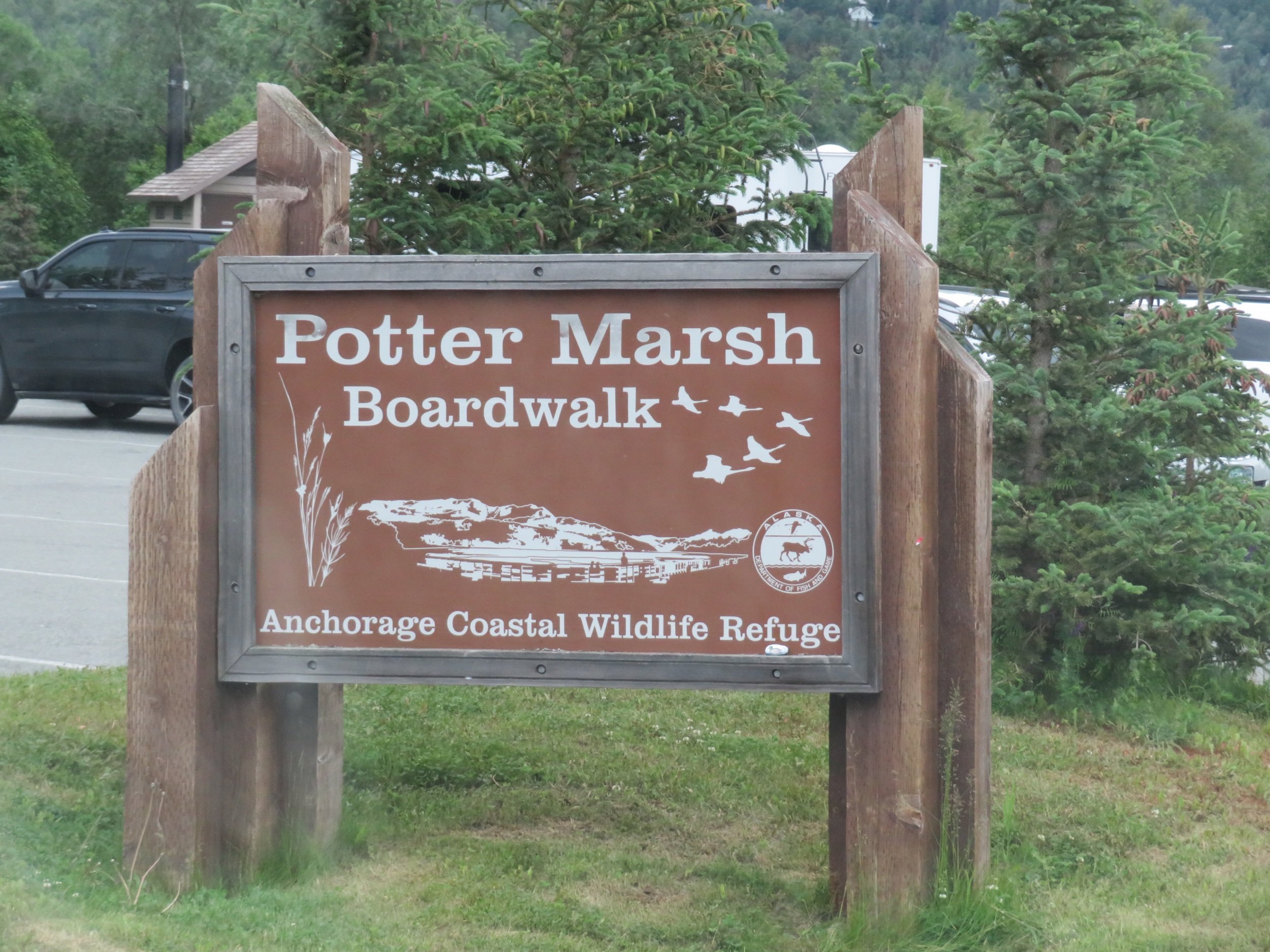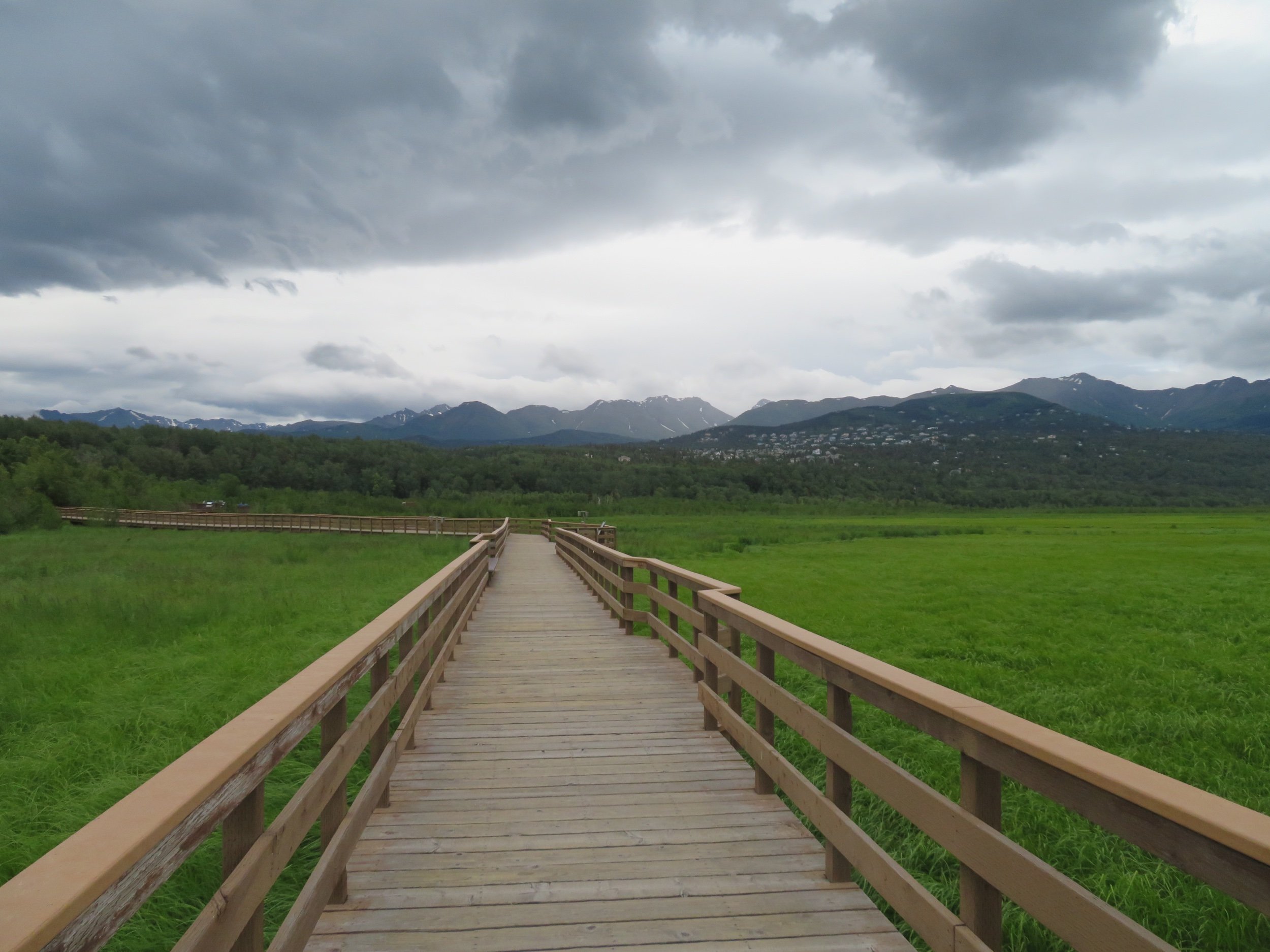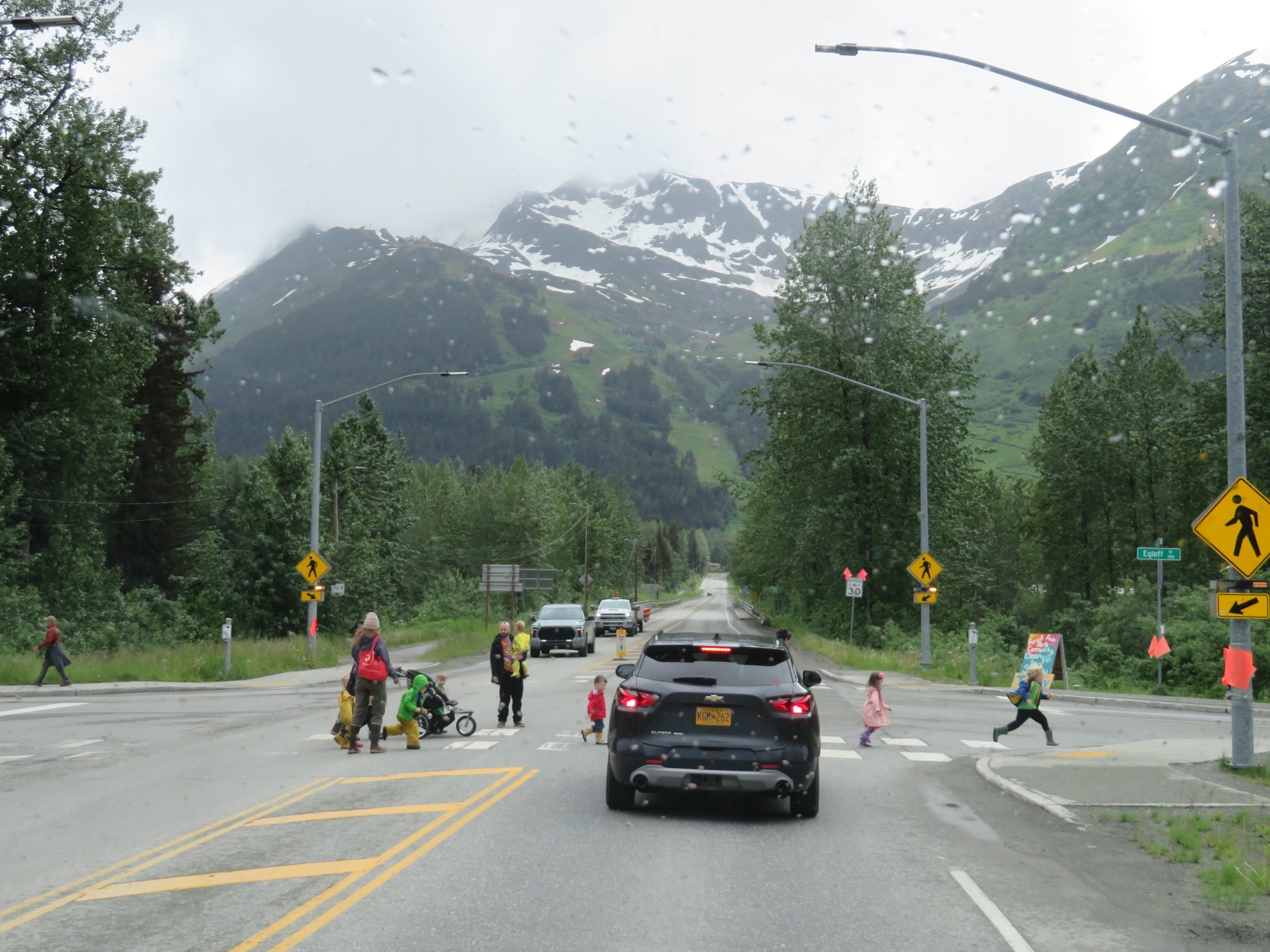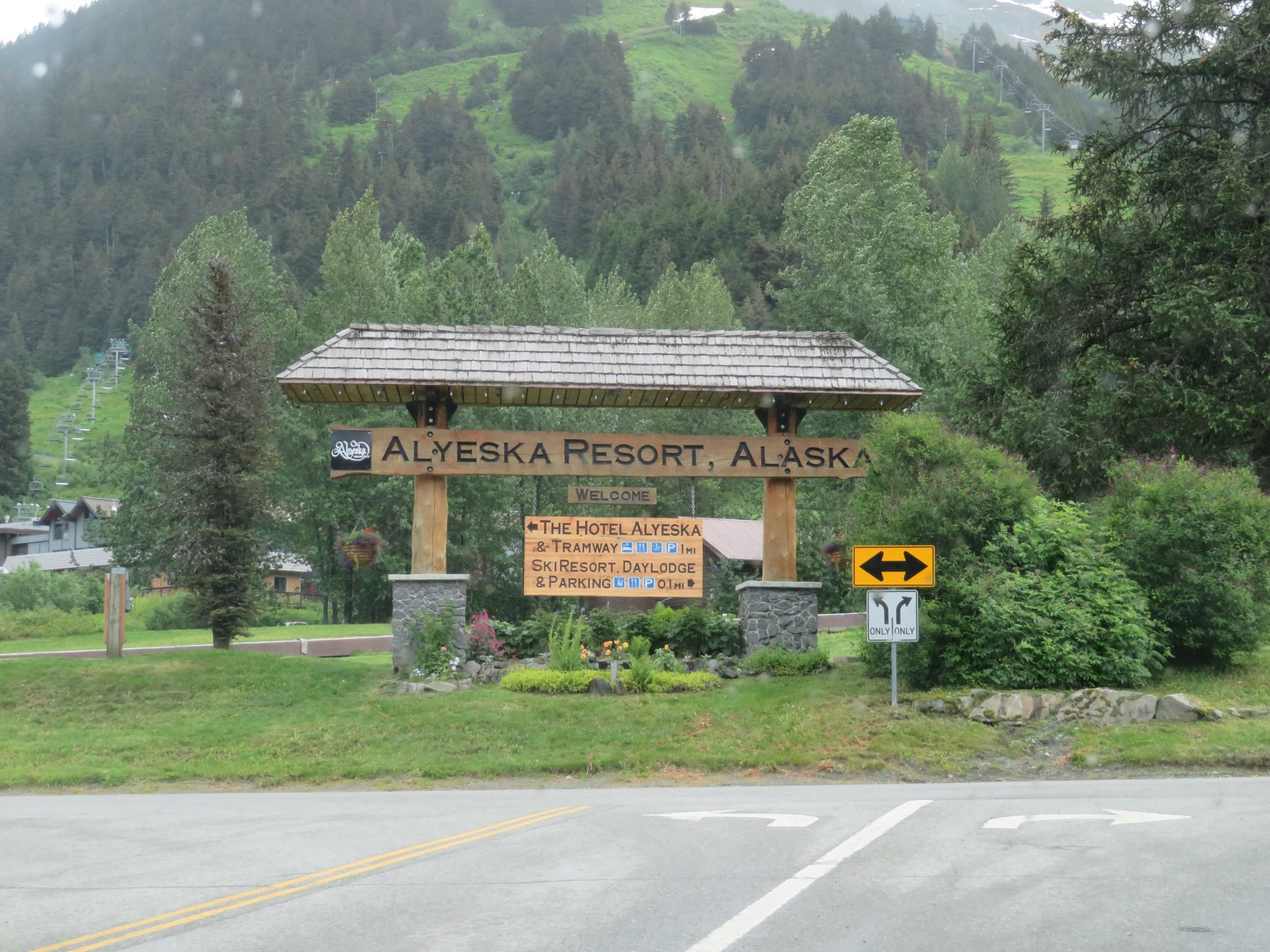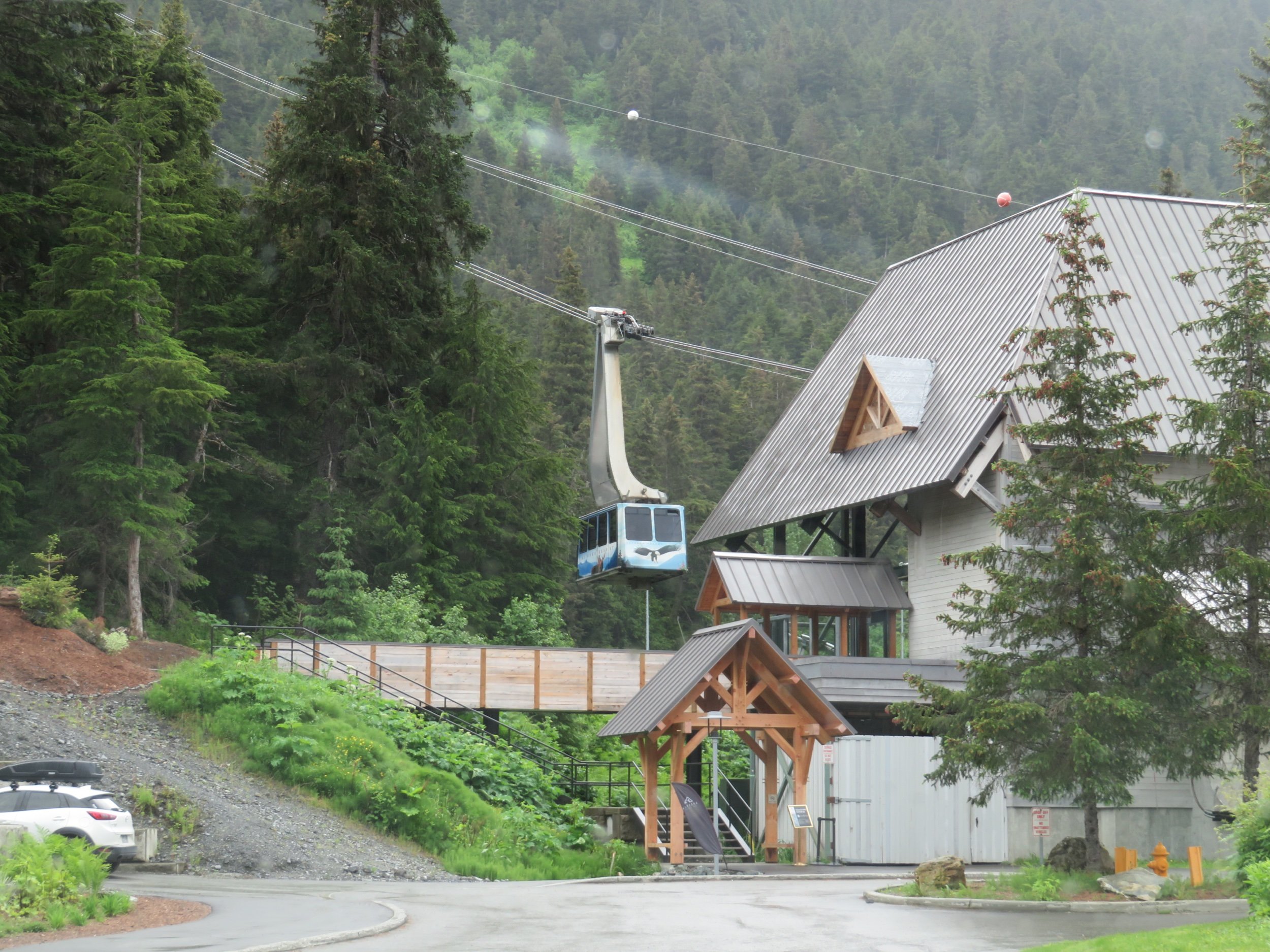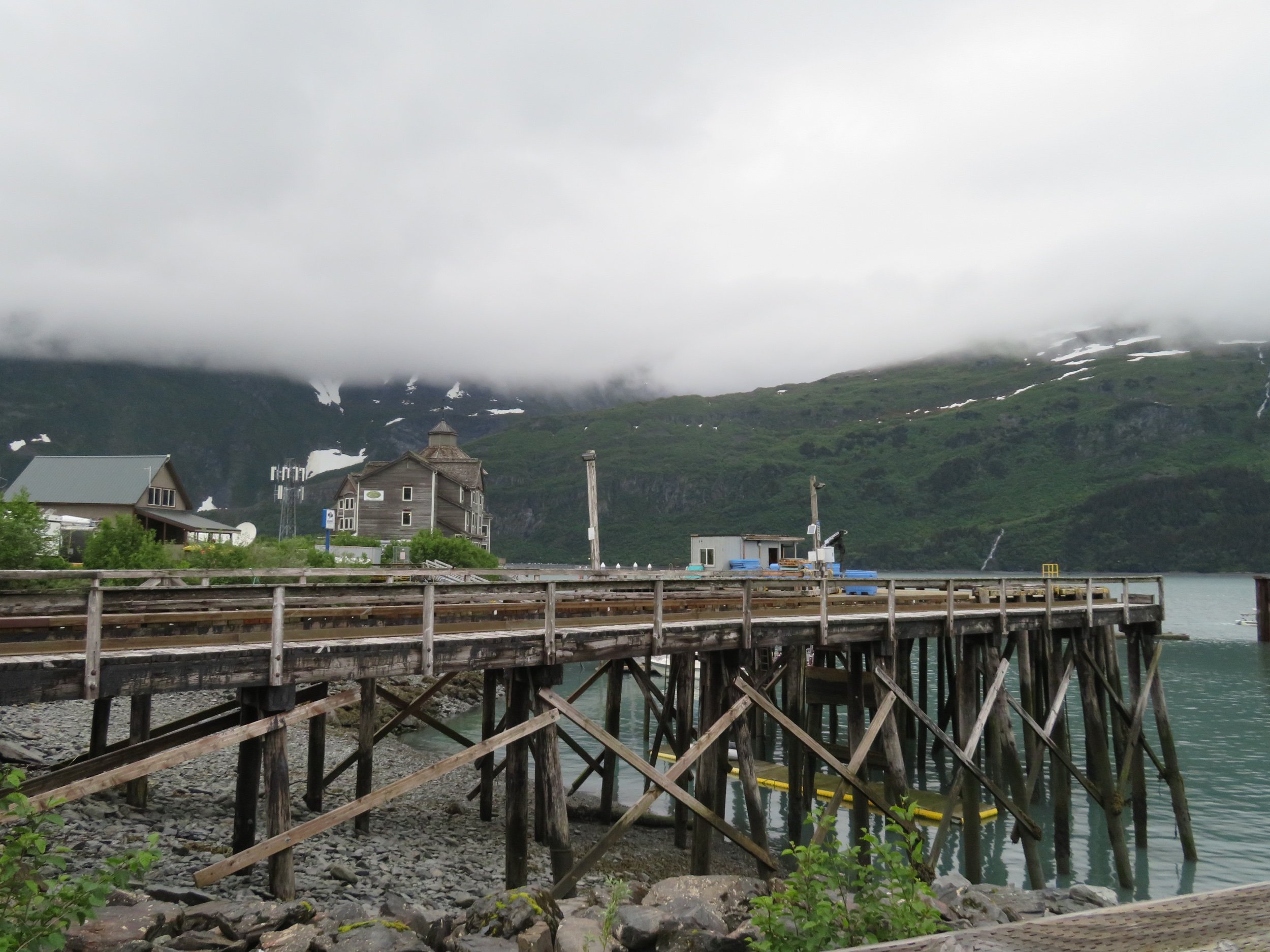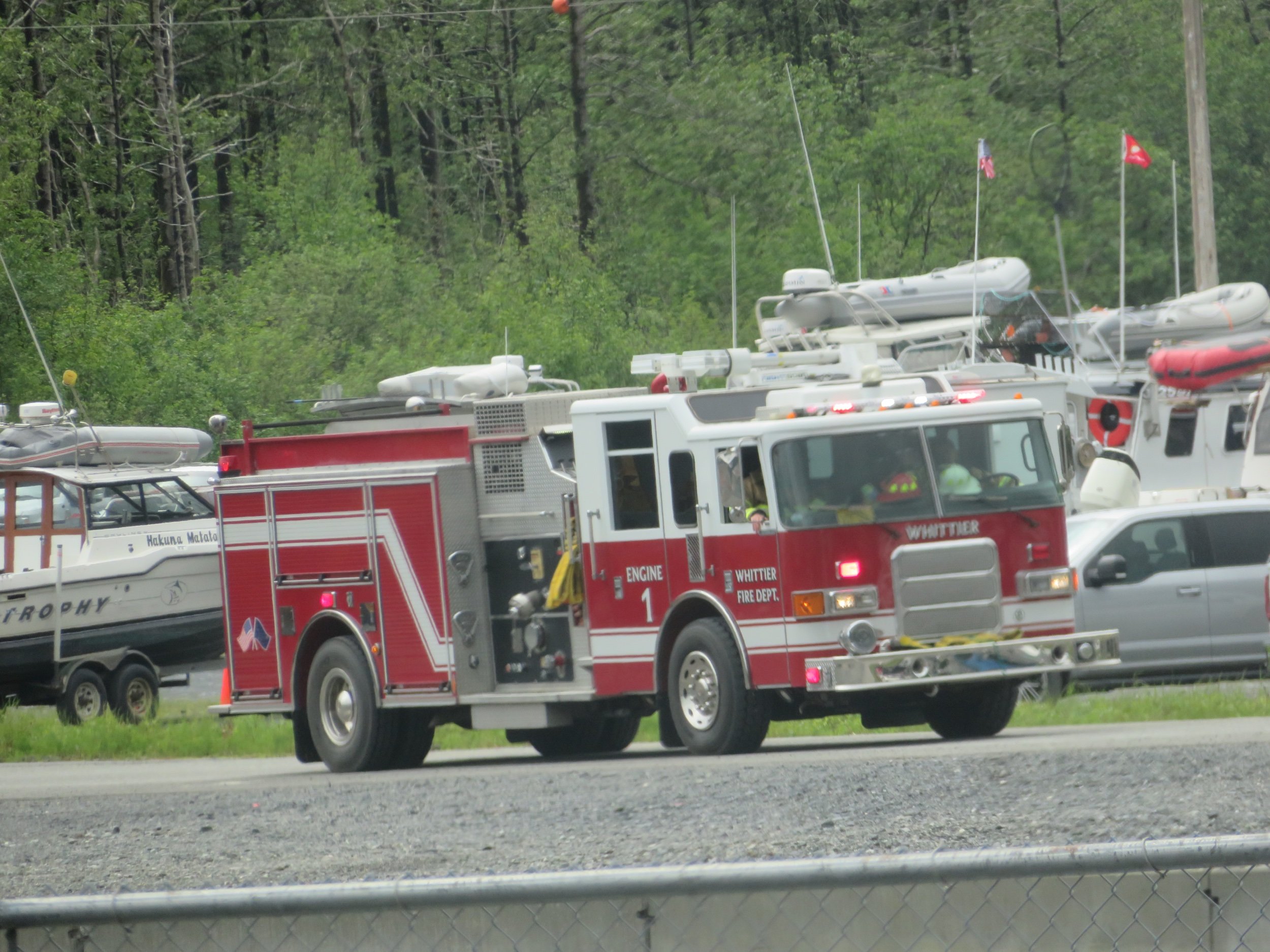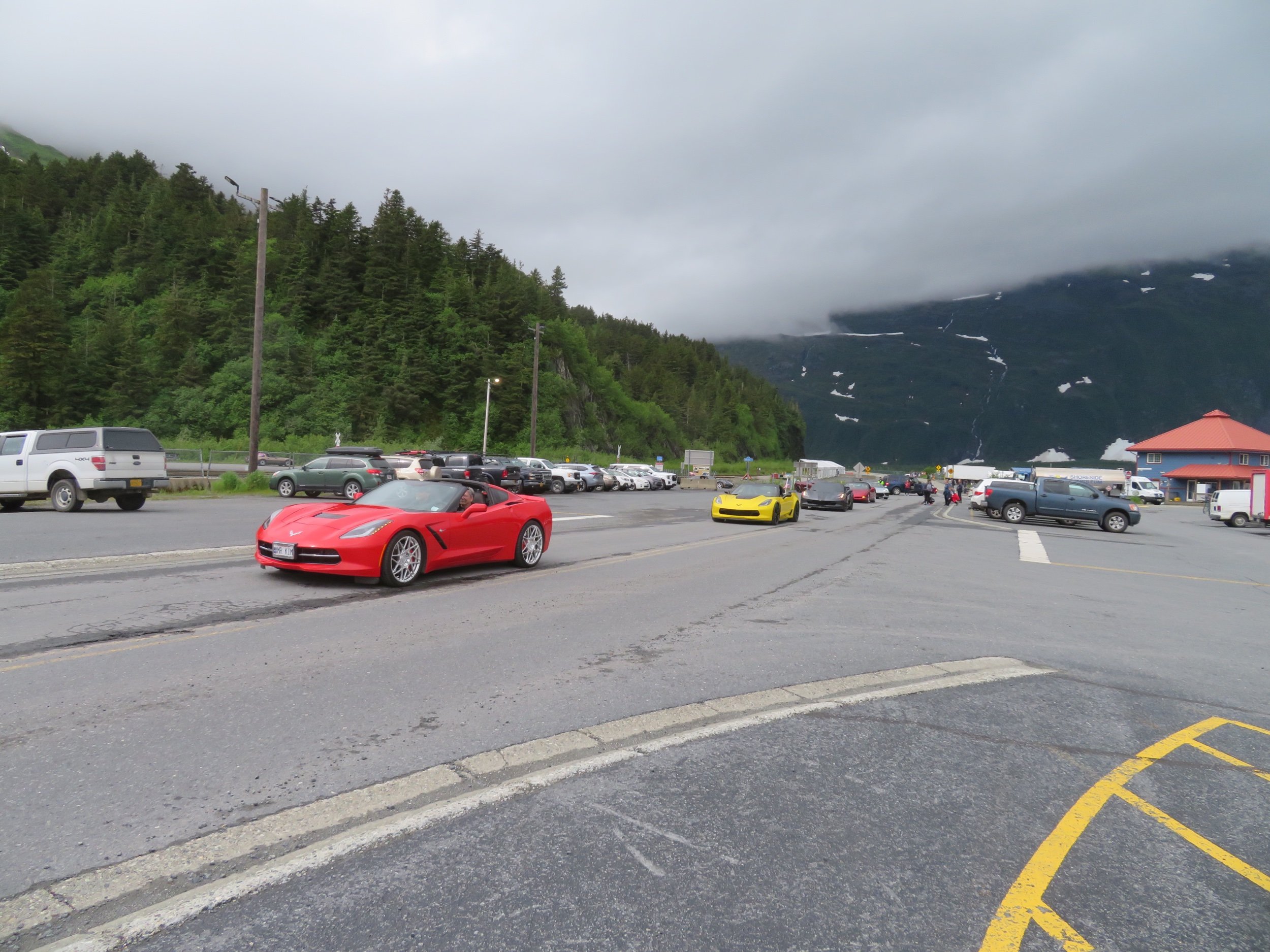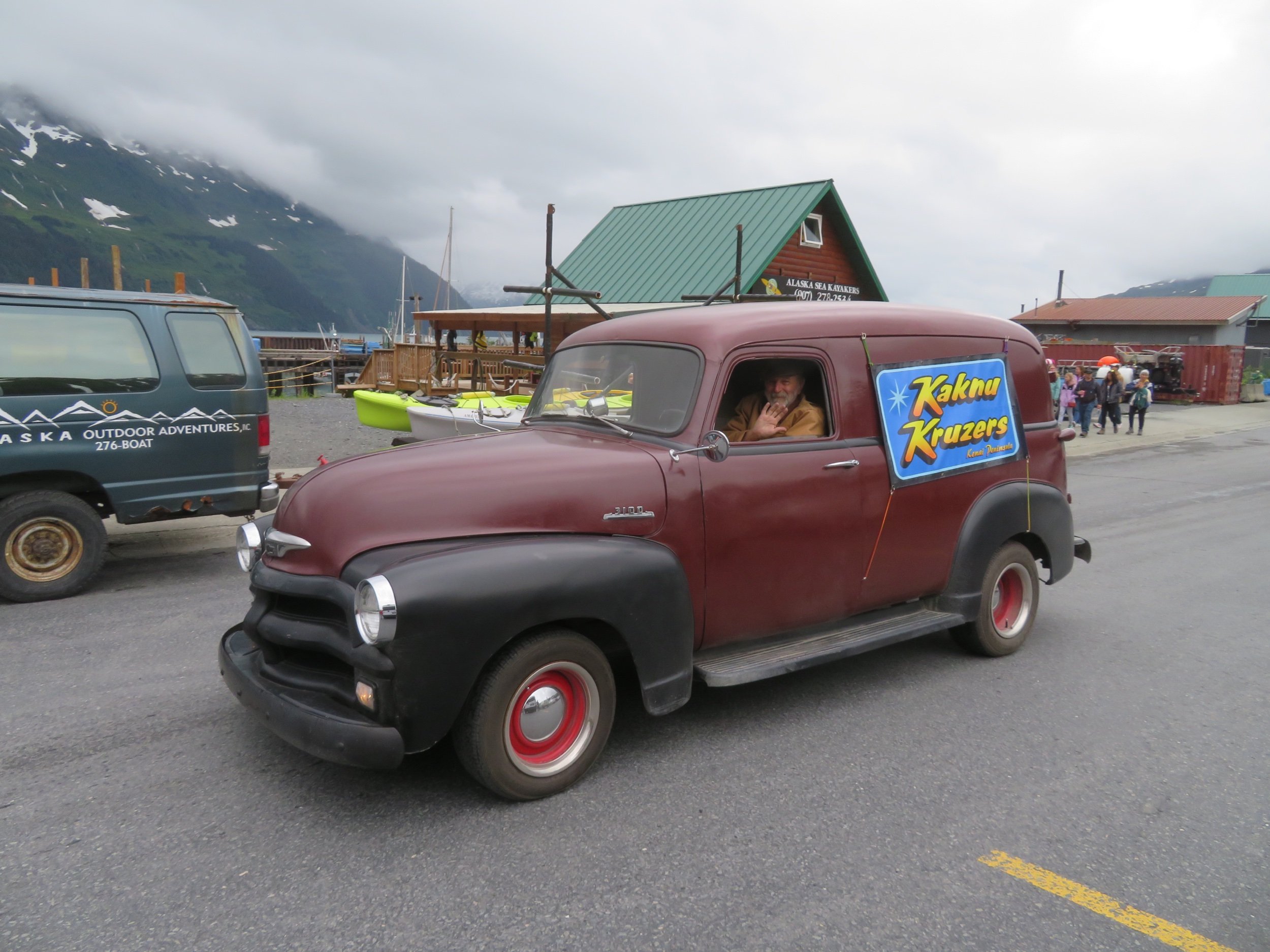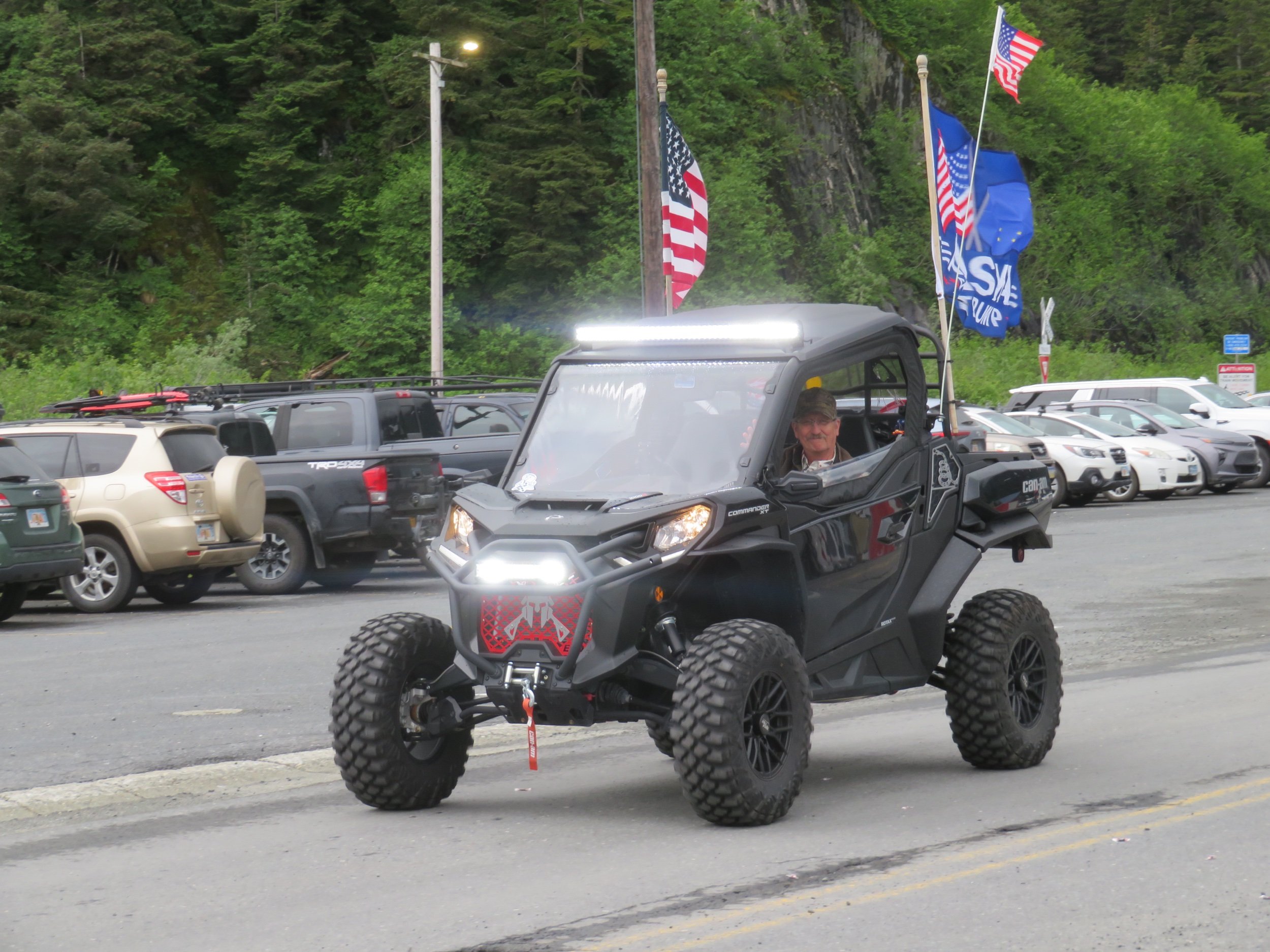Welcome to the Kenai Peninsula - 1
/Girdwood, Crow Creek Mine & Whittier
We got a late start leaving Anchorage and headed south on the Seward Highway (Alaska-1) on a cold, raw, sometimes rainy, blustery day heading towards the eastern Kenai Peninsula. The first few miles of the Seward Highway, called the New Seward Highway, is a 4-lane freeway, offering a fast getaway route out of the city. Then the road tapers down to two lanes and slows you down so you can concentrate more on the scenery and less on speed. The route follows Turnagain Arm through the Chugach National Forest and, despite the dismal weather, this Alaska Scenic Byway was absolutely stunning. You can follow along on the map below.
We stopped briefly at Potter Marsh which was touted as an outstanding bird sanctuary with boardwalks extending out into the wetlands and marsh. The wetlands and marsh were there as were the boardwalks, but the birds were nowhere to be seen. Considering the strong winds and wet weather, they were the smart ones and we were the dodos.
Turnagain Arm, by the way, is yet another reminder of Captain Cook’s influence in the area. On his 1778 voyage in search of the Northwest Passage, this narrow stretch of water was named when the HMS Resolution had to ‘turn again’ because their route off the upper end of the Gulf of Alaska aka the Cook Inlet became a dead end.
The tidal range here, up to 40’, is one of the biggest in the world and during a bore tide, when an extremely low tide collides with an extremely high tide, a wave is created that is actually surf-able. Timing was off for us, but there were several viewing areas that would have afforded great views… if it hadn’t been crappy and if the moon phase was right for the extreme tides, and… maybe on the way back?
Where one side of the road is the water, the other side rises dramatically to the Kenai Mountains. We tried unsuccessfully to find a camping site in the Chugach State Park, but it was full to capacity. Instead, we resorted to our Plan B and found a roadside turnout for the night. All good.
It rained all night long and the raw, drizzly weather continued most of the morning. We took a slight detour onto the Alyeska Highway to Girdwood, a ski resort. The area is beautiful, but little was going on. Even getting a cup of coffee proved fruitless, as the bakery/cafe was closed. We backtracked and, on a lark, decided to check out the Crow Creek Mine for which we’d seen a small sign on the way in.
After three miles of heavily potholed gravel road, we arrived at the Crow Creek. The mine and its small mining ‘village’ is family-owned by the Toohey family and has been continually occupied since 1897. hence the reason most of its buildings are still intact. The Toohey family bought the mine in 1969 and several family members still reside here. Though commercial mining is no longer a major activity here, recreational goldpanning is still done.
We opted to take the walking tour through the little village. Come on along for the walk…
We’d never seen Himalayan poppies before, but these cerulean blue flowers were thriving here. They are stunning!
The Miami Herald humorist, Dave Barry, visited this area in 1988. Read his tongue-in-cheek account of his visit for a good belly laugh.
Back on the Seward Highway, rivers and lakes whizzed by. Stopping at one riverside for a break, we noted several dead salmon. Having completed their mission of returning home to spawn, they’d given up the ghost on their return downstream and were now providing food for other animals. Ravens and seagulls were busy getting their fill.
Yet another lake was absolutely wall-to-wall yellow pond lilies all coming into bloom. A gorgeous sight.
The rain intensified, coming down in torrents and we gave up on more sightseeing for the day.
Since our next destination was Whittier, we headed onto the Portage Glacier Highway to look for a campsite. The Chugach National Forest, second largest national forest in the USA, offered several campsites along this route. We checked out the Williwaw Campground at $23/night ($11.50 for pass holders). We were a little leery of the campground name. We remember all too well ‘williwaws’ in the canals of Patagonia and Tierra del Fuego, strong katabatic winds that swept in off the water and through the mountains bursting into the anchorage like freight trains with sudden, sometimes terrifying force. Spoiler alert… we stayed for two days. The winds behaved and the anchor didn’t budge.
The Trail of Blue Ice passed through the campground and we walked for 1/4 mile or so until the drizzle became a downpour and drove us back to Blanche. We’d try this trail again if and when the rain subsided. It rained hard the entire night.
We celebrated the 4th of July (I know I’m behind!) in Whittier, another small coastal town situated at the end of a deep fjord dubbed the “Gateway to Prince William Sound”, that’s difficult to access. The town is a stop on the Alaska Marine Highway (the ferry) route and some cruise ships, as well as the Alaska Railroad or alternately accessible via the 2.5 mile long Whittier Tunnel (Anton-Anderson Memorial Tunnel) bored through a mountain. This tunnel is the longest highway tunnel and the longest combined highway/railroad tunnel in North America. It’s a single lane affair and cars and trains from opposite directions share access… at designated times. The tunnel toll entering Whittier is $13/car. Trucks, trailers and RVs pay more.
This was not your usual tunnel and definitely not your usual tunnel entrance.
The toll taker provided a brochure on timetables for traveling through the tunnel as well as lots of safety and emergency information, like what to do if there’s an accident in the tunnel, or if you break down, or if there’s a fire… a doomsday litany of everything that could go wrong. Our timing was good. There was no wait and we made it through without incident although seeing and feeling the railroad tracks under us kept us wondering if we’d meet a rogue train coming towards us.
After 2-1/2 rather eerie miles, there was light at the end of the tunnel and we entered Whittier.
Parking is limited in this tiny town and expensive at $11/day wherever you can manage to find a place. We parked by the Harbormaster’s office and walked along the boardwalk by the small boat harbor. It was cold and raw but not raining.
We found the entrance to the pedestrian tunnel which reminded us of a large sewer pipe and crossed underneath the railroad tracks to the other side of town.
A rather bizarre piece of Whittier trivia… most all of the town’s 273 residents live in condos at Begich Towers, a 14-story high rise that was originally built in 1956 to house military personnel. Most of the town offices and facilities occupy the same building.
We finished our little walking tour in time for the 4th of July parade and festivities to begin at about 11:15-ish. Fire truck sirens sounded, police cars, EMT vehicles and ambulances their lights flashing, blared. A procession of Corvettes and vintage cars, quads, golf carts and kids on bicycles followed, all waving, horns and bells sounding, throwing candy to the applauding ‘crowds’ along parade route. The whole line-up looped through the tiny town past us and then, because it was short, looped around again to hoots and hollers of delight. Small town celebrations at their best. Wieners, popcorn and sno-cones were being served across the railroad tracks. The whole affair was over by 11:30.
But not quite… as the fire trucks and police cars passed us the second time and sped on down the highway towards the tunnel, we heard a loud boom… fireworks in the middle of the day? Billowing black smoke from behind us told another story. A small cabin cruiser had exploded at the fuel dock. What confusion! All the parade vehicles were still sounding sirens and horns. We waved frantically at the departing emergency vehicles and within minutes they had returned and swung into action efficiently and effectively. The area was cleared, the fire was contained and the unfortunate captain of the small boat was treated for burns.
Catastrophe averted, we wandered down the boardwalk peeking into souvenir shops and boutiques, finally settling on a cup of hot seafood chowder at the Swiftwater Seafood Cafe before heading back to Blanche.
There were long lines at the tunnel entrance to exit Whittier along with a scrolling neon message that read “Closed until further notice”. Really? Another 39-hour Peel River Ferry experience? Just 30 minutes and the tunnel opened up again and we whizzed through.
While waiting, we got a great view of Whittier Glacier.
Back at the campsite, we took a short walk on the Trail of Blue Ice and once again, the rain came down in sheets curtailing our hike. We retreated to Blanche and snugged up for the evening.
Next time, finally an actual walk on the Trail of Blue Ice (blue ice = glaciers!), a visit to the Portage Valley Visitor Center and then we move on south to Seward and the Kenai Fjords National Park. Come on along!




